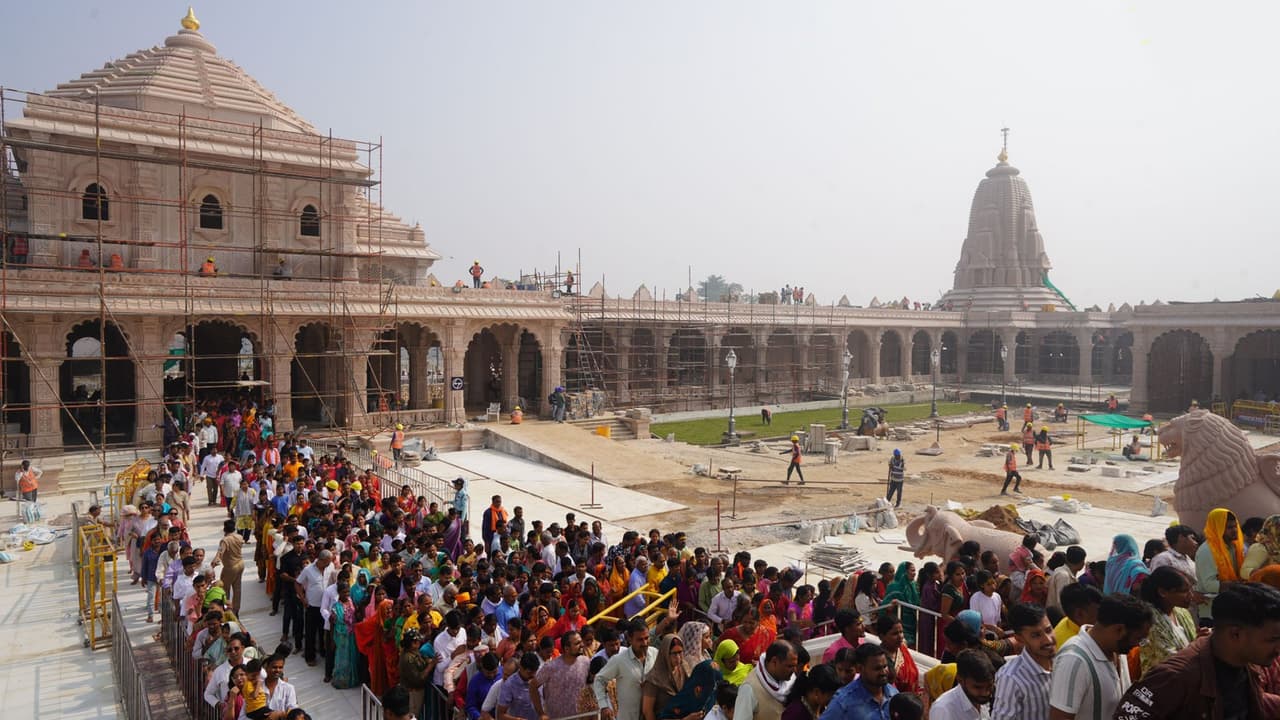After the construction of Ram temple, the economy of Ayodhya is growing rapidly. Under the leadership of CM Yogi and guidance of PM Modi, the organization of hoisting the saffron flag on November 25 is making Ayodhya a global hub of tourism, trade and handicrafts.
Lucknow. The economy of Ayodhya is once again going to gain new momentum. On November 25, Prime Minister Narendra Modi will hoist the saffron flag on the peak of Shri Ram Janmabhoomi temple. Preparations for this event are in the final stages by Shri Ram Janmabhoomi Teerth Kshetra Trust. Under the guidance of Prime Minister Modi and the leadership of Chief Minister Yogi Adityanath, Ayodhya is becoming a new example of development with new divinity, grandeur and innovation.
Ayodhya’s economy growing due to tourism
After the construction of Ram temple, a historic increase has been recorded in the number of tourists coming to Ayodhya from India and abroad. This is giving new heights not only to Ayodhya but also to the entire economy of Uttar Pradesh. Foreign tourists are now giving global recognition to the local products and handicrafts of Ayodhya, thereby realizing the dream of ‘Local to Global’.
Deepotsav increased the attraction of tourism
Deepotsav, which started under the direction of Chief Minister Yogi, is now making new records every year. This event not only added religious sentiments but also gave new impetus to the economic activities of Ayodhya. Now lakhs of devotees are expected to attend the flag hoisting ceremony on 25th November. This will greatly benefit the local business, hotel, restaurant and transport sector.
Traders and small entrepreneurs got a big market
The increasing number of tourists in Ayodhya has led to a significant increase in the income of local traders, handicraftsmen and small scale industries. Tourists buy idols, bags, clothes and souvenir products related to Ram Temple in large quantities. There has been a record increase in hotel and lodge bookings, due to which the income of the hospitality sector is continuously increasing.
Income boom in transport sector
With the arrival of lakhs of pilgrims during major events, the demand for e-rickshaws, autos, buses and tourist vehicles increases rapidly. Due to this, the income of people associated with transport and tour-travels sector is also increasing significantly.
Ayodhya’s contribution to the economy of Uttar Pradesh
After the construction of Ram temple, Ayodhya has set many new records in the economic field. Due to the efforts of Chief Minister Yogi Adityanath, Ayodhya has now become a symbol of development and prosperity. In the year 2024, 16.44 crore pilgrims visited Ramlala, whereas in January-June 2025 this number has increased to more than 23.82 crore. After the consecration of Ram temple, 40-50% increase in tourism has been recorded.
Income of local handicraftsmen increased manifold
Ayodhya has now become a role model of development and employment. Due to temple tourism, local handicraftsmen and artisans have got a new market. After the construction of Ram temple, the number of such artisans has increased by 25%.
Earlier he used to earn ₹200-300 per day, now his income has reached ₹1000 to ₹1500. Their earnings increase manifold during special events.
Big economic boost from Deepotsav
Local traders, potters, sailors, flower sellers and sculptors earn huge income during the Festival of Lights. During that period, 90% of the hotels were fully booked and an income of more than Rs 5 crore was recorded from Deepotsav alone.
New life to pilgrimage based industries
After the construction of Ram temple, the annual income of industries related to pilgrimage is continuously increasing. The contribution of temple tourism to the economy of Uttar Pradesh is more than ₹1.25 lakh crore. While 5.76 crore tourists came in 2023, this figure increased three times to 16.44 crore in 2024.
Ayodhya’s products reach foreign countries through ODOP
Under the ODOP scheme (One District One Product), handloom and jaggery products of Ayodhya are now reaching foreign countries. In Ayodhya district, 20% of the total cultivable land is used in sugarcane production. The jaggery, gajak, laddu, chikki and traditional sweets made here are in demand in foreign countries also. Tourists buy these products from Ayodhya and take them with them, which is increasing the income of farmers and local businessmen.
